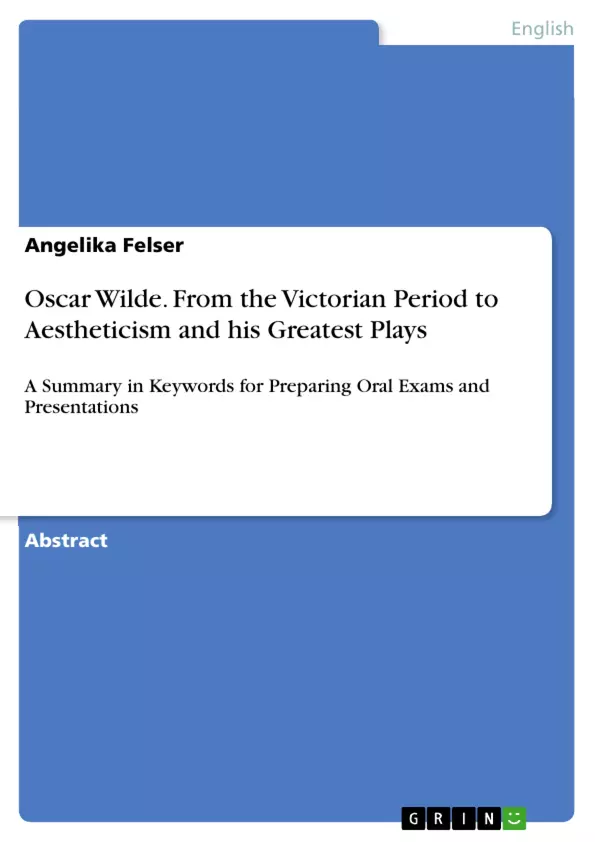This is a summary in keywords on the topic of the Irish playwright Oscar Wilde.
Amongst other points, his life, the Victorian period, aestheticism, decadence, Wilde’s conception of criticism in "The Critic as Artist", the relationship between Art and Nature in the "Decay of Lying", "Salomé", "The Picture of Dorian Gray", "The Importance of Being Earnest" and human nature in "Lady Windermere’s Fan" are discussed.
Table of Contents
- Oscar Wilde
- Victorian Period
- Aestheticism
- Origins and Principles
- Influence on Literature
- Decadence
Objectives and Key Themes
This text aims to provide a comprehensive overview of Oscar Wilde's life and work, placing his aesthetic philosophy within the context of the Victorian era. It explores the evolution of Aestheticism, a movement that challenged Victorian morality and embraced art for art's sake. The text also touches on the concept of Decadence, a related but more radical movement that emerged in the late 19th century.
- The Life and Works of Oscar Wilde
- The Rise of Aestheticism in the Victorian Period
- The Influence of Aestheticism on Literature and Art
- The Concept of Decadence and its Relationship to Aestheticism
- The Role of Art in Society and Morality
Chapter Summaries
- Oscar Wilde: This chapter provides a biographical sketch of Oscar Wilde, highlighting his early life, education, and rise to fame as a proponent of Aestheticism. It discusses key influences on his work, such as Walter Pater and John Ruskin.
- Victorian Period: This chapter explores the social, political, and intellectual context of the Victorian era, discussing the impact of the Industrial Revolution and the rise of new social and intellectual movements. It also introduces key literary figures of the period, such as Charles Dickens, the Brontë sisters, and Thomas Hardy.
- Aestheticism: This chapter examines the origins and principles of Aestheticism, highlighting its rejection of Victorian morality and its emphasis on art for art's sake. It explores the ideas of key figures, such as Walter Pater and Théophile Gautier, and their impact on literature and art.
- Decadence: This chapter discusses the development of Decadence as a more radical movement within Aestheticism. It examines the themes and characteristics of Decadence, as exemplified in the works of writers such as Charles Baudelaire and Joris-Karl Huysmans.
Keywords
Key terms and concepts explored in this text include Oscar Wilde, Aestheticism, Decadence, Victorian period, art for art's sake, morality, beauty, and the influence of Walter Pater and John Ruskin.
- Quote paper
- Angelika Felser (Author), 1998, Oscar Wilde. From the Victorian Period to Aestheticism and his Greatest Plays, Munich, GRIN Verlag, https://www.grin.com/document/335910



